Urea fertilizer is an organic chemical compound in the form of white crystals with neutral pH. It is an odorless product with a melting point of 132.7°C, which is well soluble in water and alcohol, but insoluble in ether and chloroform. Urea fertilizer is made from anhydrous ammonia and is also available in granular form today.
Urea (Urea) is a highly used nitrogen fertilizer in agriculture, known for having the highest nitrogen content (46%) among all solid fertilizers, making it highly effective for promoting plant growth. The nitrogen in urea helps enhance vegetative growth (the green parts of the plant) and increase crop yield.
Types of Urea Fertilizer
Urea fertilizer is a chemical fertilizer widely used in agriculture as a nitrogen source. It is commercially produced by reacting ammonia with carbon dioxide and is available in granular solid form or as cylindrical tablets.
Both forms of urea fertilizer contain 46% nitrogen, but the evaporation rate and leaching percentage of urea are higher in tablet form. Therefore, urea granules are 15-20% more efficient than the tablet type. The chemical formula of urea is CO (NH2)2, and it is naturally excreted in the urine of mammals. Further details on this topic are provided in the petroBNX Physics magazine.
Characteristics of Urea Fertilizer
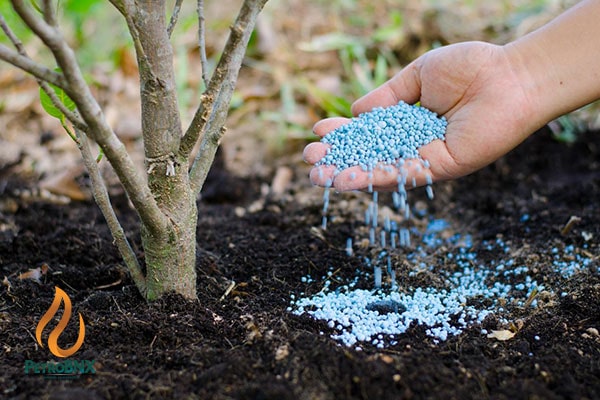
Urea fertilizers are highly soluble (1079 grams per liter at 20°C). Therefore, besides soil fertilization, they can also be absorbed through spraying on the foliage of plants. However, urea fertilizers should not be used in hydroponic crops, as they immediately leach from the container.
Urea is an inexpensive nitrogen source with an NPK ratio of 0-0-46 in its solid form. Another fertilizer containing a high concentration of urea is Urea Ammonium Nitrate (UAN). UAN is a liquid fertilizer that contains 28-32% nitrogen.
Urea undergoes hydrolysis in the soil, converting into ammonia and carbon dioxide and is used extensively for feeding crops. Although urea is naturally produced in humans and animals, synthetic urea is produced through anhydrous ammonia.
Other names for urea fertilizer include amide acid carbonate, carbamide, carbamide acid, carbonyl diamide, and isora.
Reactions of Urea Fertilizer in Soil
Over 90% of industrial urea production worldwide is used as a nitrogen fertilizer. Urea contains the highest nitrogen content among all solid nitrogen fertilizers for common uses. Therefore, it has the lowest transportation cost per unit of nitrogen nutrient.
Plants cannot directly absorb urea nitrogen, and for a plant to utilize nitrogen from urea, it must be converted into ammonium (NH4+) and nitrate (NO3-) forms, which are usable by plants.
Many soil bacteria possess the enzyme urease, which catalyzes the conversion of urea into ammonia (NH3) or ammonium ion (NH4+) and bicarbonate ion (HCO3−). Therefore, urea fertilizers rapidly convert into ammonium form in the soil.
Ammonia gas easily escapes from the soil. Therefore, if conditions favor ammonia formation rather than ammonium, a significant amount of nitrogen can be lost. High soil pH and temperature also affect nitrogen loss.
High soil pH increases evaporation rates, converting more ammonium into ammonia gas. High soil temperature also enhances the hydrolysis rate by increasing urease activity.
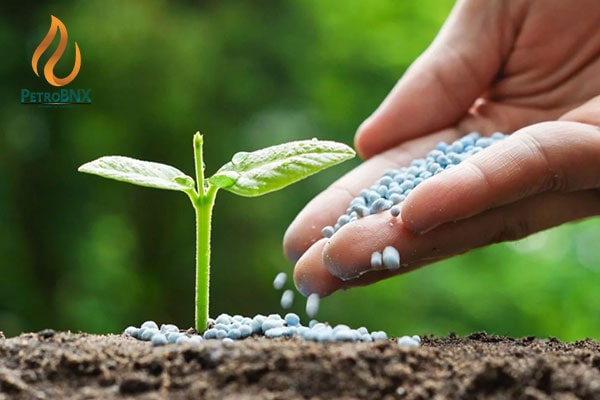
It’s worth knowing:
Ammonium and nitrate are easily absorbed by plants and are the primary sources of nitrogen for plant growth. Urea is also used in many formulations of multi-component solid fertilizers.
Urea is typically applied at rates between 40 to 300 kilograms per hectare (35 to 270 pounds per acre). During summer, urea is often applied before or during rainfall to minimize evaporation.
Due to the high nitrogen concentration in urea, its even distribution across the land is crucial because the risk of damage to seed germination from direct contact or near-contact with the seeds is likely. Urea can be dissolved in water for use as a spray or via irrigation systems.
Using urea fertilizers increases the pH of the soil around the application site because hydrogen ions are consumed. However, nitrification of ammonium to nitrate, performed by soil bacteria, has a minimal impact on soil acidity.
Advantages of Using Urea Fertilizer
- High nitrogen content: Urea has the highest nitrogen content among nitrogen fertilizers. This helps plants grow faster and stronger.
- Compatibility with various soil types: Urea performs well in a wide range of soil types and can be added to the soil in either granular or liquid form. Note that using sulfur fertilizers is not recommended for saline soils.
- Easy application: Urea is easily spread across fields and can be applied through irrigation systems.
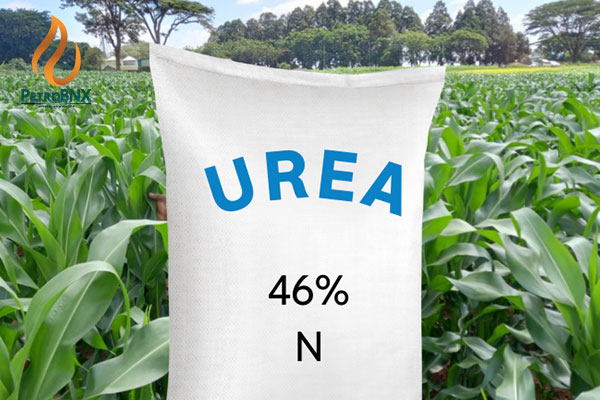
Disadvantages and Challenges of Using Urea Fertilizer
- Nitrogen loss: If not applied correctly, part of the nitrogen evaporates as ammonia, leading to nitrogen loss and reduced fertilizer efficiency.
- Environmental pollution: Excessive use of urea can lead to groundwater contamination as the extra nitrogen converts to nitrate and enters the groundwater.
- Negative effect on soil: Repeated use of urea fertilizer can increase soil pH.
- Safety Note: By using compounds such as effective calcium carbonate (ECC), excessive acidity can be neutralized.
Is Urea Fertilizer Beneficial for All Plants?
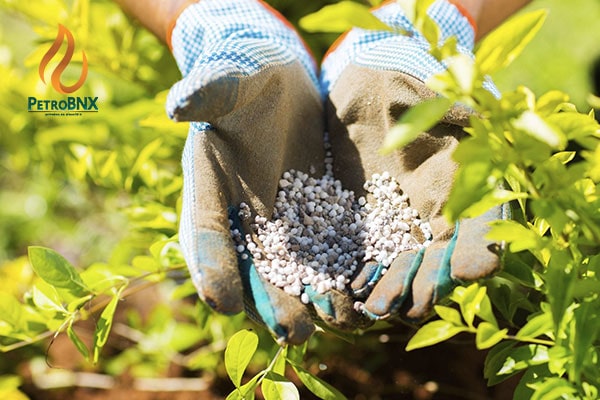
Urea is a common nitrogen fertilizer that can be used for various plants. However, its suitability for each plant depends on factors like the plant’s nutrient requirements, soil type, and environmental conditions. Generally, urea can be a good nitrogen source for plants like grasses and many vegetables that require high levels of nitrogen. However, it should be used cautiously for plants sensitive to high nitrogen levels, as it may lead to excessive vegetative growth with reduced fruit and flower production.
Urea Fertilizer for All Plants
In addition to the factors mentioned above, the effectiveness of this product as a fertilizer can be affected by soil pH and moisture levels. In some cases, other types of fertilizers and soil amendments may be needed to ensure optimal plant growth and health. Therefore, it’s important to consider the specific needs of the plants.
Which Plants Are Suitable for Urea Fertilizer?
This product is used for a wide range of crops, including:
- Grains
- Oilseeds
- Vegetables and fruits
But is urea good for flowering plants? Urea can be a good nitrogen source for flowering plants because nitrogen is an essential nutrient for plant growth and development. However, proper application of urea for flowering plants depends on factors such as plant species, growth stage, soil conditions, and the environment. Generally, urea can help promote healthy foliage and encourage strong root growth in flowering plants. Proper use of this fertilizer is important to avoid excessive fertilization.
How Much Urea is Suitable for Plants?
The amount of urea applied depends on several factors, including:
- Plant age
- Growth rate
- Plant size
- Plant species
- Soil and environmental conditions
The recommended amount of urea is about 0.45 kilograms per 9.3 square meters of area. However, excessive use of urea can have negative effects on plant growth and the environment.
How Often Should Urea Fertilizer Be Applied?
The frequency of urea application depends on factors like:
- Soil
- Growth stage
- Environmental conditions
- Specific plant species
As a general rule, urea is typically applied every 4 to 6 weeks during the growing season when plants are actively growing and need more nutrients. However, monitoring plant responses to the fertilizer is important. Over-fertilizing with urea can have negative effects on plant growth and the environment. Therefore, it is important to follow usage guidelines.
Urea Fertilizer Application Guidelines
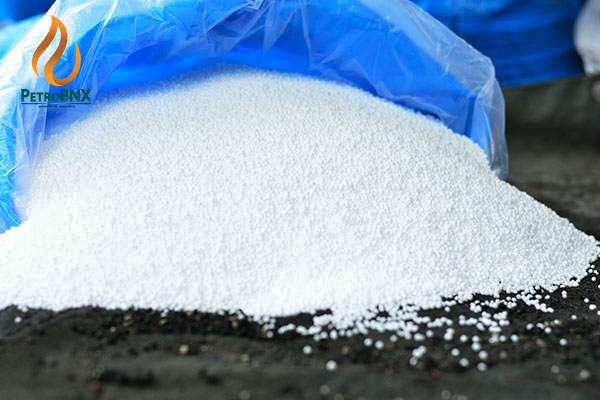
Urea fertilizers should be applied with care because improper use can cause nitrogen loss due to ammonia volatilization, and in some cases, urea may damage germinating seeds.
Urea fertilizer should be quickly incorporated into the soil through irrigation or rainfall after application. Applying urea fertilizers on the soil surface without irrigation leads to greater nitrogen loss. Nitrogen loss is higher in soils with a high pH.
Urea fertilizers should be applied when the temperature is not too low or high. A soil temperature of 15 to 20°C (70°F) is considered optimal.
Using urea fertilizers containing urease inhibitors reduces hydrolysis rates and, consequently, ammonia production and volatilization, allowing one or two weeks for irrigation.
Interesting to Know:
Urea fertilizers contain biuret, a chemical compound with the formula [H2NC(O)]2NH, which forms during the urea production process. At high concentrations, biuret may be toxic to agricultural products.
Most urea fertilizers contain 1.0 to 1.3% biuret, which is considered safe for use. However, some crops may be more sensitive. For spraying on sensitive crops, urea fertilizers with low biuret content (about 0.25% biuret) should be used. Additionally, if urea fertilizer is applied near germinating seeds, the biuret in it may damage the seeds.
Alternatives to Urea Fertilizer
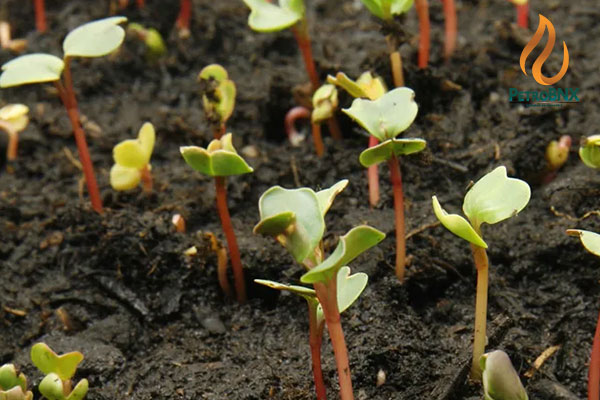
Ammonium nitrate, ammonium sulfate, and potassium nitrate are suitable alternatives to urea fertilizer due to their high nitrogen content. Organic fertilizers containing nitrogen, such as compost, grass, and cottonseed, can also be added to soil. By practicing crop rotation with nitrogen-fixing plants like legumes, alfalfa, certain clovers, and peanuts, the use of this chemical fertilizer can be reduced.
Types of Urea Fertilizer
Prilled Urea
Prilled urea fertilizer is a type of fertilizer produced during the process of extracting urea from natural gas and by combining urea with ammonium sulfate and potassium sulfate. This type of fertilizer has a high concentration of urea and nitrogen, making it a nutritional source for plants.
Granular Urea
Granular urea fertilizer is an organic compound with the chemical formula CO(NH2) and a white, granular appearance. It is commonly used as a nitrogen fertilizer worldwide. Approximately 90% of global urea production is used in agriculture, and it contains the highest nitrogen content among solid nitrogen fertilizers.
Coated Urea
coated urea (SCU) is a type of slow-release fertilizer coated with various materials like sulfur or polymer. It offers high efficiency and numerous benefits for soil and plants, making it widely used in agricultural industries.
Slow-Release Urea
Slow-release urea has a formulation that gradually releases nitrogen into the soil. It is suitable for optimizing plant nutrition over time.
Urea Ammonium Nitrate (UAN)
Liquid urea ammonium nitrate fertilizer, commonly referred to as UAN, is a solution of urea and ammonium nitrate containing about 28%-32% nitrogen. Both urea and ammonium are easily absorbed by plants, making it an excellent source for supplying nitrogen needs.
Urea Formaldehyde (UF)
Urea formaldehyde (or urea methanal) is an opaque thermosetting resin obtained by heating urea and formaldehyde in the presence of weak bases like ammonia and pyridine. It is also widely used in products such as adhesives, MDF, and molding materials.
Urea Solution
,Urea Solution The liquid form of urea used in irrigation systems and for foliar applications.
Safety Notes About Urea Fertilizer
Urea causes skin and eye irritation and respiratory problems. Prolonged skin exposure can lead to skin swelling. High concentrations in the blood can cause damage to internal organs.
When heated above its melting point, urea decomposes and produces toxic fumes. Urea is normally not flammable, but when mixed with strong oxidizers like nitrides, it can cause explosions.
Since urea absorbs moisture from the air, it should be stored properly. For bulk storage, it should be covered with a specialized, waterproof covering. It is also recommended to store urea and many other solid fertilizers in a cool, dry place with good ventilation.


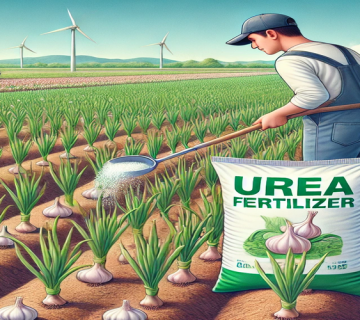
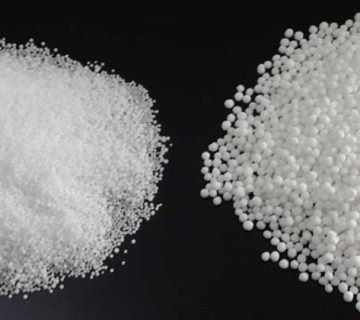

No comment